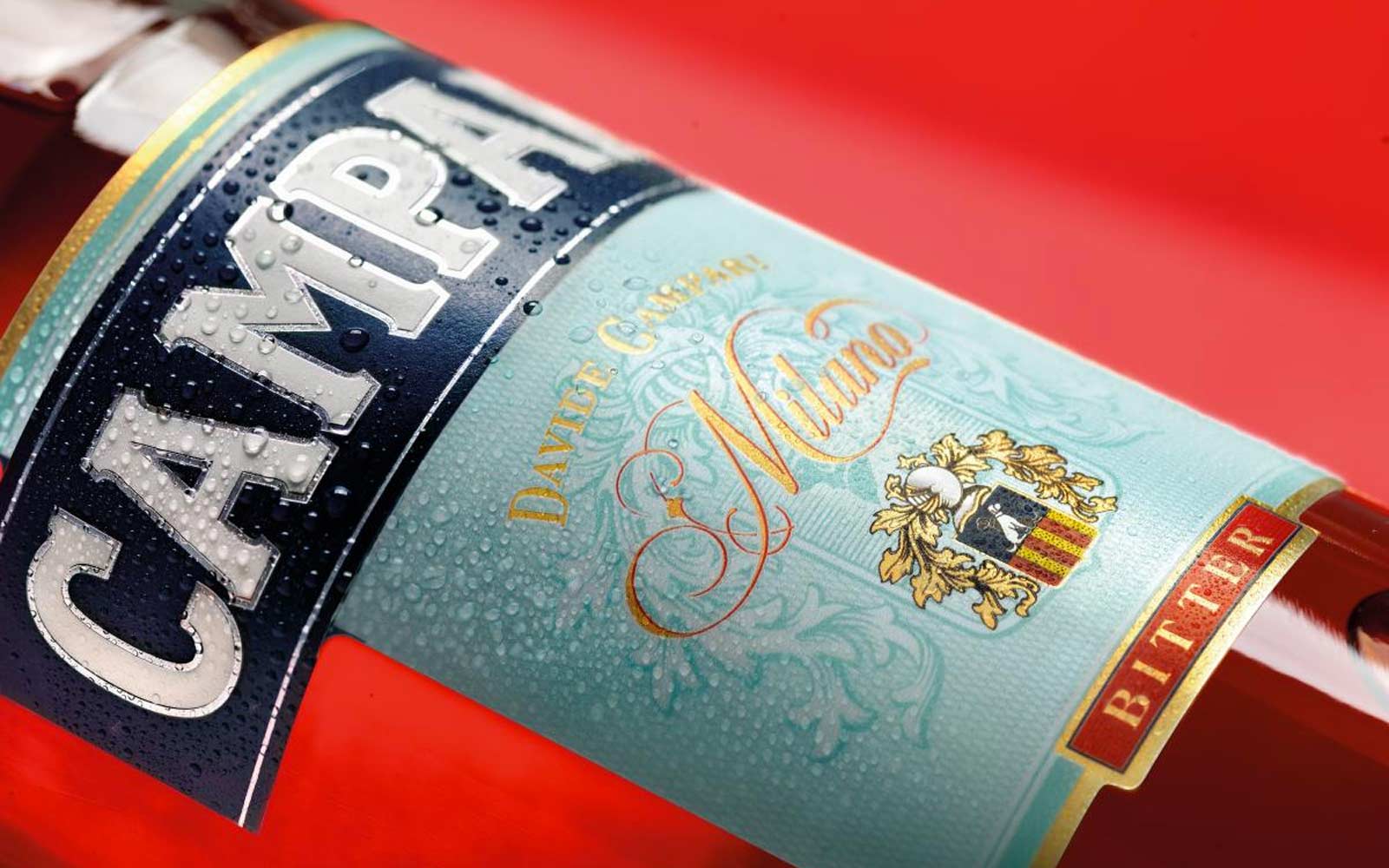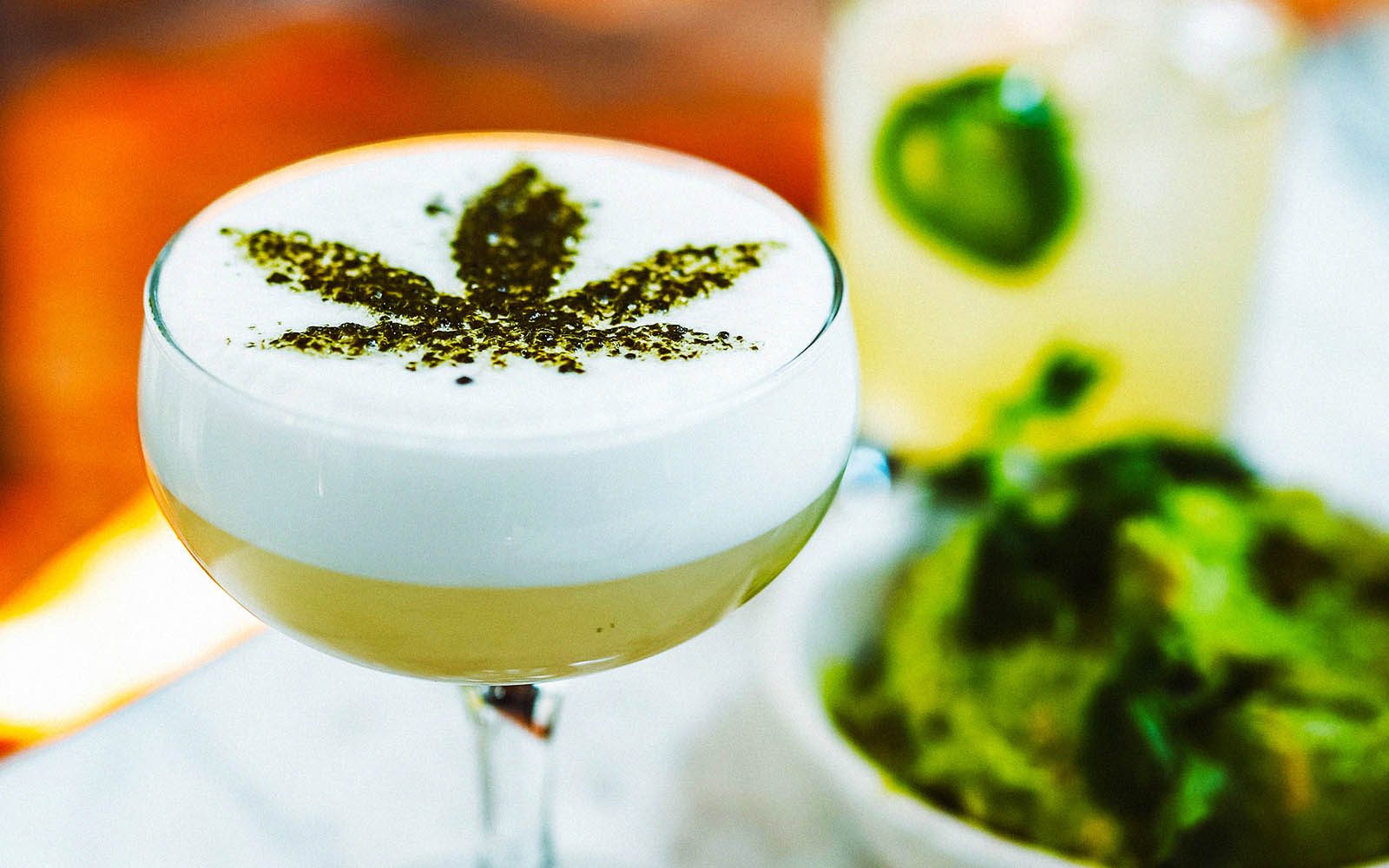[Feature image by Jez Timms]
Knowing the different kinds of steak and certain kinds of cuts can be slightly stressful. Often it’s the most expensive thing on the menu (or at the butcher shop). You may find yourself asking, “should I be ordering a ribeye or a hangar? Which cut will my guests enjoy more at the dinner table?” These are all important questions, and it’s good to know the different types of cuts before you spend big money on an unworthy piece of meat.
Hover your mouse over any part to discover more about each cut. Bovine knowledge is power, friends.
This Infographic is designed by Jack Thompson from BroBBQ
Table of Contents
Steak Loin
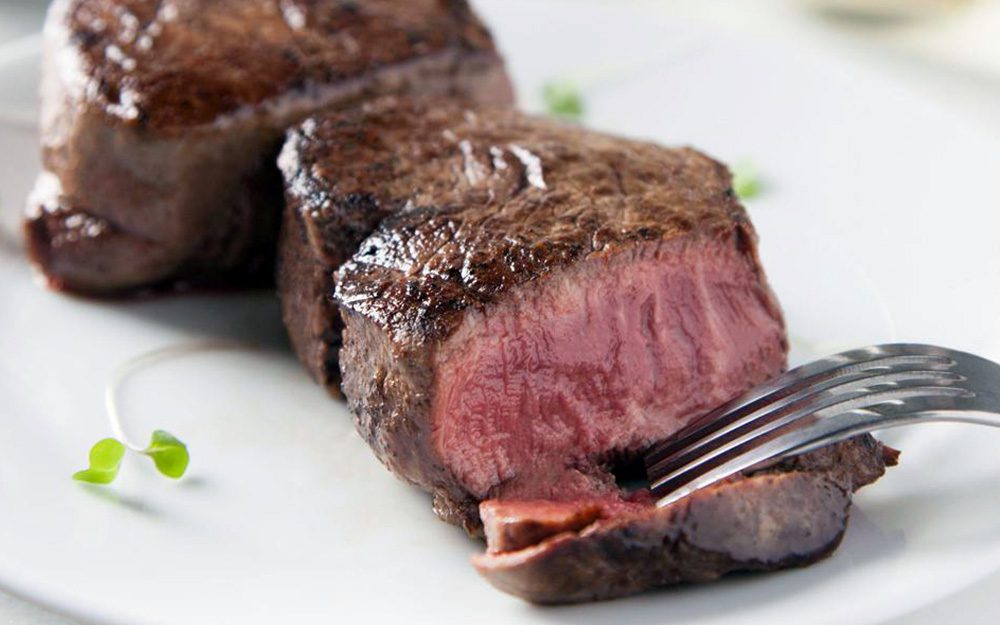
Also known as: filet, fillet, chateaubriand, filet mignon
Where it’s from: The tenderloin has an oblong shape that’s located right between the sirloin and short sirloin area. The tenderloin cut has three parts, including the “butt” (thick end), the “center cut” (middle), and the “tail” (thinnest).
The tenderloin is a “special occasions” steak, and it is served at some of the best steakhouses. High-end steakhouses will serve the center cut of the tenderloin since it’s the most consistent in size.
The loin is on the cow’s lower back, which is a less active muscle. Because of this, beef loin is softer and more tender. It’s this cut that you can get the juiciest and most buttery steaks from.
Wine pairing: Try a Bordeaux from California, Spain or Italy. Bordeaux matches with almost all cuts of beef, and tenderloin is no exception.
New York Strip
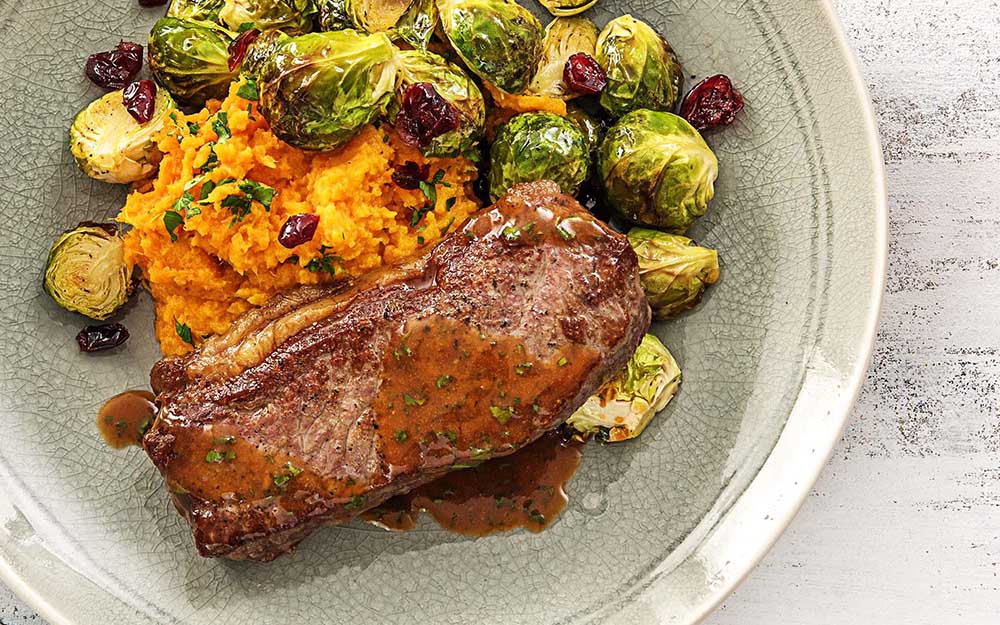
Also known as: strip steak, strip loin, shell steak
Where it’s from: The strip comes from the short loin of the cow.
The strip steak, a moderately tender cut with a fat marbling, is a classic staple amongst steakhouses. An alternative to the tenderloin steak, a strip steak is leaner at some parts and has significantly more fat content in others. It has a fine-grained texture and is an extremely popular cut due to its prominent beefy flavor.
Drink pairing: Try a Cabernet or any rich, red wine. A full bodied wine has a more pronounced taste that lingers longer and matches well with the steak’s strong flavors.
Ribeye
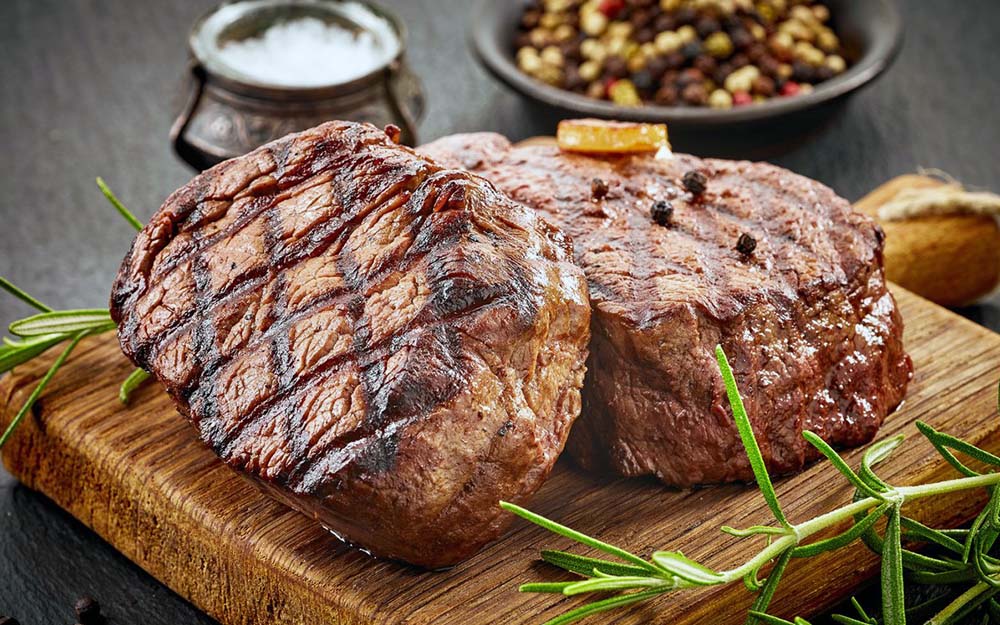
Also known as: market steak, beauty steak
Where it’s from: The rib eye is from the rib section (numbers 6 through 12 typically)
A popular steak choice, the ribeye is a flavorful cut that boasts a fat marbling and a buttery flavor. Many people choose this steak for its taste and tenderness. It has the most fat compared to other cuts which is where it gets its tenderness from.
Drink pairing: Try a Grenache wine, a perfect pairing for fattier cuts.
Porterhouse & T-Bone
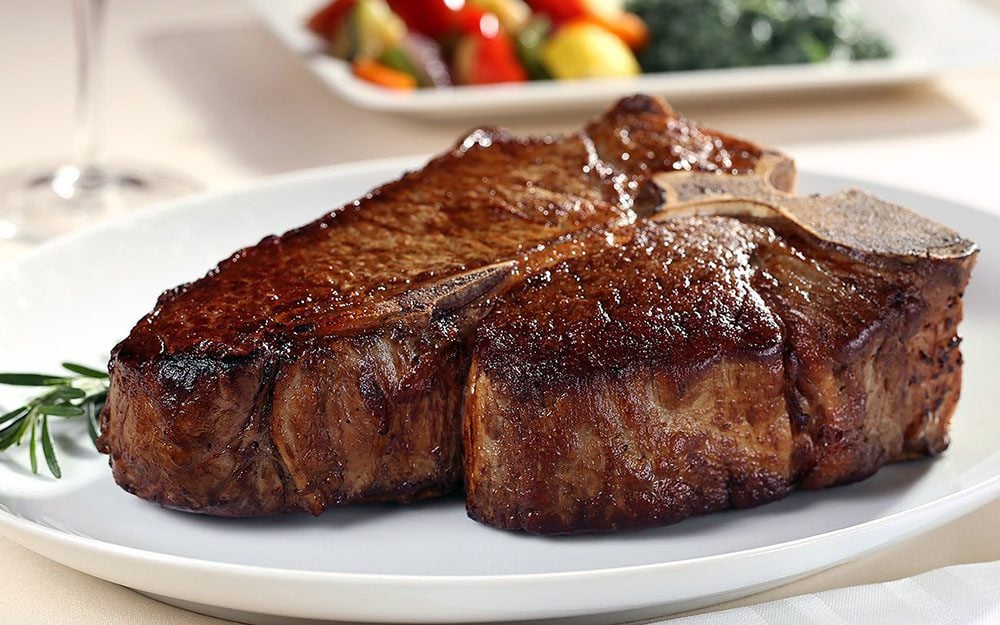
Where it’s from: Both are cut from the short loin
Why choose between a filet mignon or New York strip steak when you can have both? The Porterhouse and T-Bone are similar steaks and only differ in size. Both cuts boast two very different types of steak including a New York strip steak as the smaller cut and a larger filet mignon on the other end. A T-Bone cut steak is the same as the porterhouse cut, only it’s a little smaller than its counterpart. Next time you’re ordering out and not sure what to get, get the best of both worlds with these options.
Drink pairing: Try a Zinfandel or Cabernet; due to the fattier cuts and stronger taste of these cuts, it will pair well with any of the two.
Flank Steak
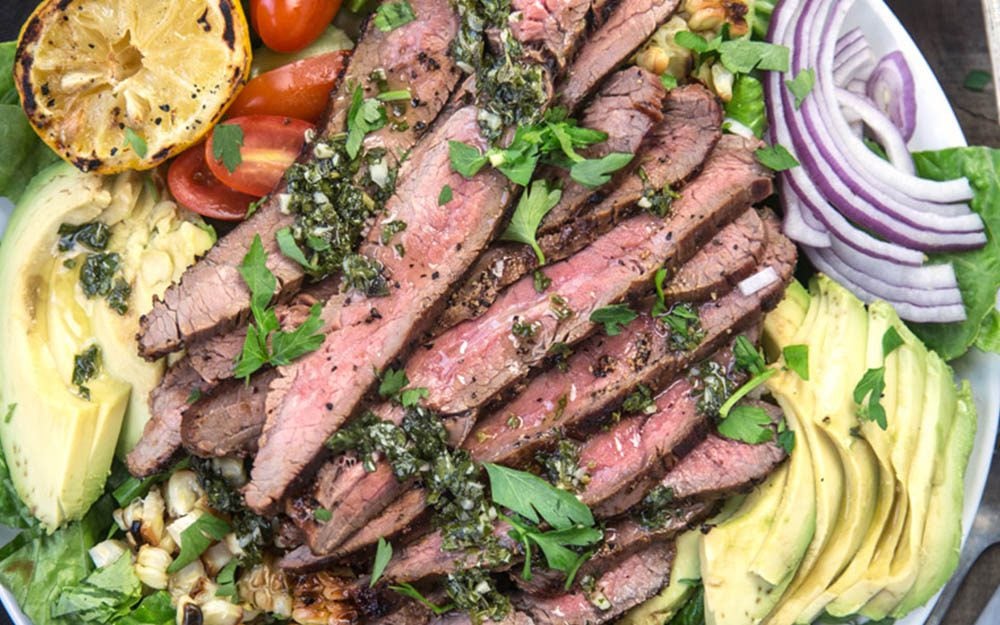
Where it’s from: the underbelly and bottom abdomen of the cow
Another popular choice of steak, flank is ubiquitous at restaurants you frequent on the daily. When you’re eating stir-fry from your local Chinese wok or grubbing down on a plate of fajitas, you’re chowing down on flank steak.
Although flank is on the belly of the cow, it is counterintuitively not a fatty cut of meat. Steak flank contains many fibers and is often cut against the grain after cooking to make the meat more tender. It’s tough, but it also packs a ton of flavor. Most people serve this steak by cutting it into thin slices.
Drink pairing: Try a Merlot or Zinfandel to balance out the zesty flavors of the flank steak. Even if you’re eating a flavorful wok infused with pineapples and sauces, a dry red will bring out the flank
Tri-Tip
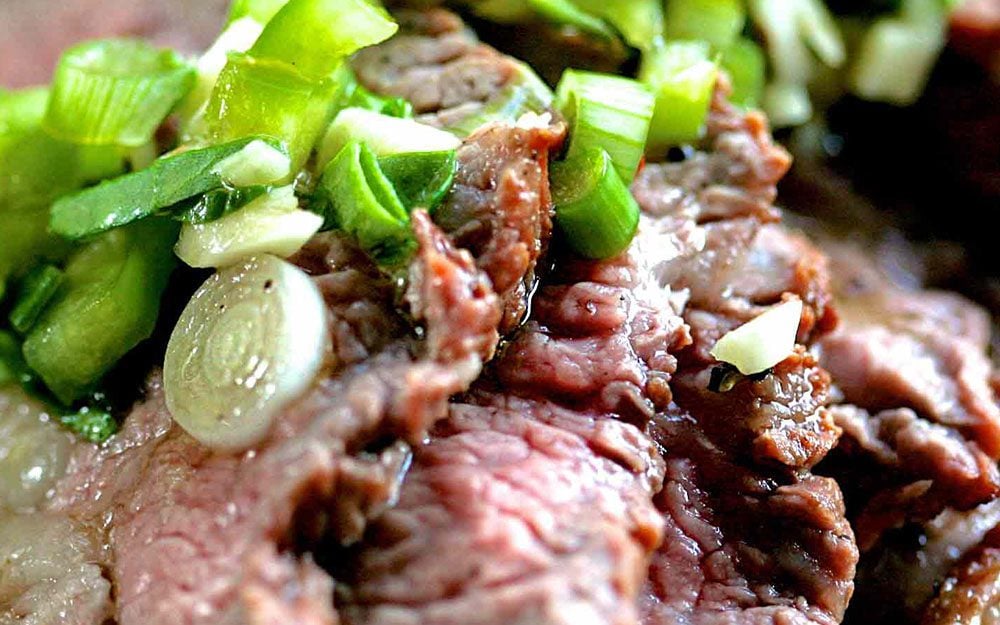
Also known as: Santa Maria Steak
Where it’s from: toward the rear, above the flank and behind the short loin
Tri-tip sandwiches smothered in barbecue is what we live for. Well, for at least us Californians. Popular in the central coast and central valley of California, it’s become popularized in other areas of America including New York and Texas. Prominent in fast-food and barbeque joints, this inexpensive steak is perfect for an afternoon of grilling with its lean cut. Smother it in sauce and seasoning and you’re good to go.
Drink pairing: Try a Syrah or a Merlot which will complement the seasoning well with the tri-tip.
Read next How To Pair Wine with Food: A Primer
FAQ About Steaks
How long does it take to grill steak?
This really depends on the wellness you’re aiming for. For a rare steak, 2 – 3 minutes on each side. For a medium, 3.5 – 4 on each side. For a well-done steak, 5 – 6 minutes on each side.
What temperature should you cook steak on a gas grill?
Before you start cooking, make sure to heat up your gas grill to medium-high. If you want to get a rare steak, make sure to heat up the steak to 135 degrees F. For a medium one, go for 145 degrees. For a well-done one, 160 degress will do.
How to bake a steak in the oven?
You start off by pre-heating the oven to 450 degrees F, and place a skillet in the oven to heat it up. Remove the skillet when it gets very hot and add the steak to it, searing each side on for about 45 – 50 seconds. Afterwards, put a thermometer inside the steak and insert the skillet back in the oven, and keep monitoring it until you get the desired temperature for your steak.
- The Steak Guide Understanding the difference between different cuts of beef - December 17, 2018
- 5 Budget-Friendly Travel Destinations in the US Go from coast to coast at a lower cost - April 7, 2017
- Date Night Recipes That Are Sure to Impress Make something more impressive than spaghetti and meatballs - January 13, 2017




